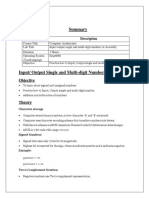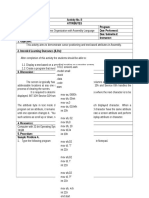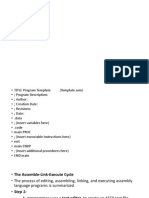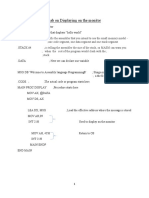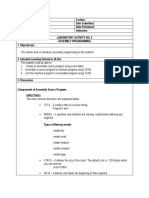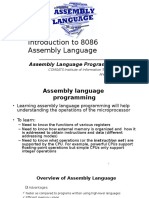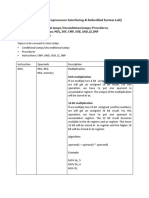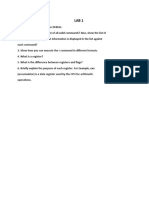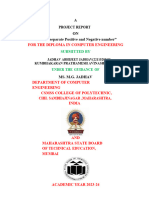0% found this document useful (0 votes)
12 views3 pagesAssembly Language Project Report
This project report details a simple addition calculator program written in Assembly language that allows users to input two single-digit numbers, adds them, and displays the result. It demonstrates basic input, output, and arithmetic operations in Assembly. The report also discusses potential improvements, such as handling multi-digit numbers and additional arithmetic functions.
Uploaded by
Md. Nasimul Islam NihalCopyright
© © All Rights Reserved
We take content rights seriously. If you suspect this is your content, claim it here.
Available Formats
Download as PDF, TXT or read online on Scribd
0% found this document useful (0 votes)
12 views3 pagesAssembly Language Project Report
This project report details a simple addition calculator program written in Assembly language that allows users to input two single-digit numbers, adds them, and displays the result. It demonstrates basic input, output, and arithmetic operations in Assembly. The report also discusses potential improvements, such as handling multi-digit numbers and additional arithmetic functions.
Uploaded by
Md. Nasimul Islam NihalCopyright
© © All Rights Reserved
We take content rights seriously. If you suspect this is your content, claim it here.
Available Formats
Download as PDF, TXT or read online on Scribd
/ 3






